Organisation Theory: Classical and Human Relations Theories
VerifiedAdded on 2023/01/13
|11
|2496
|79
AI Summary
This report explores classical and human relations theories in organisation theory. It discusses Taylor's theory, Fayol's theory, Weber's theory, Elton Mayo's theory, Maslow's theory, Herzberg's theory, and Theory X and Y. It also covers the concept of customer orientation, Handy's principles for decision-making, and the Japanese model of corporate governance.
Contribute Materials
Your contribution can guide someone’s learning journey. Share your
documents today.
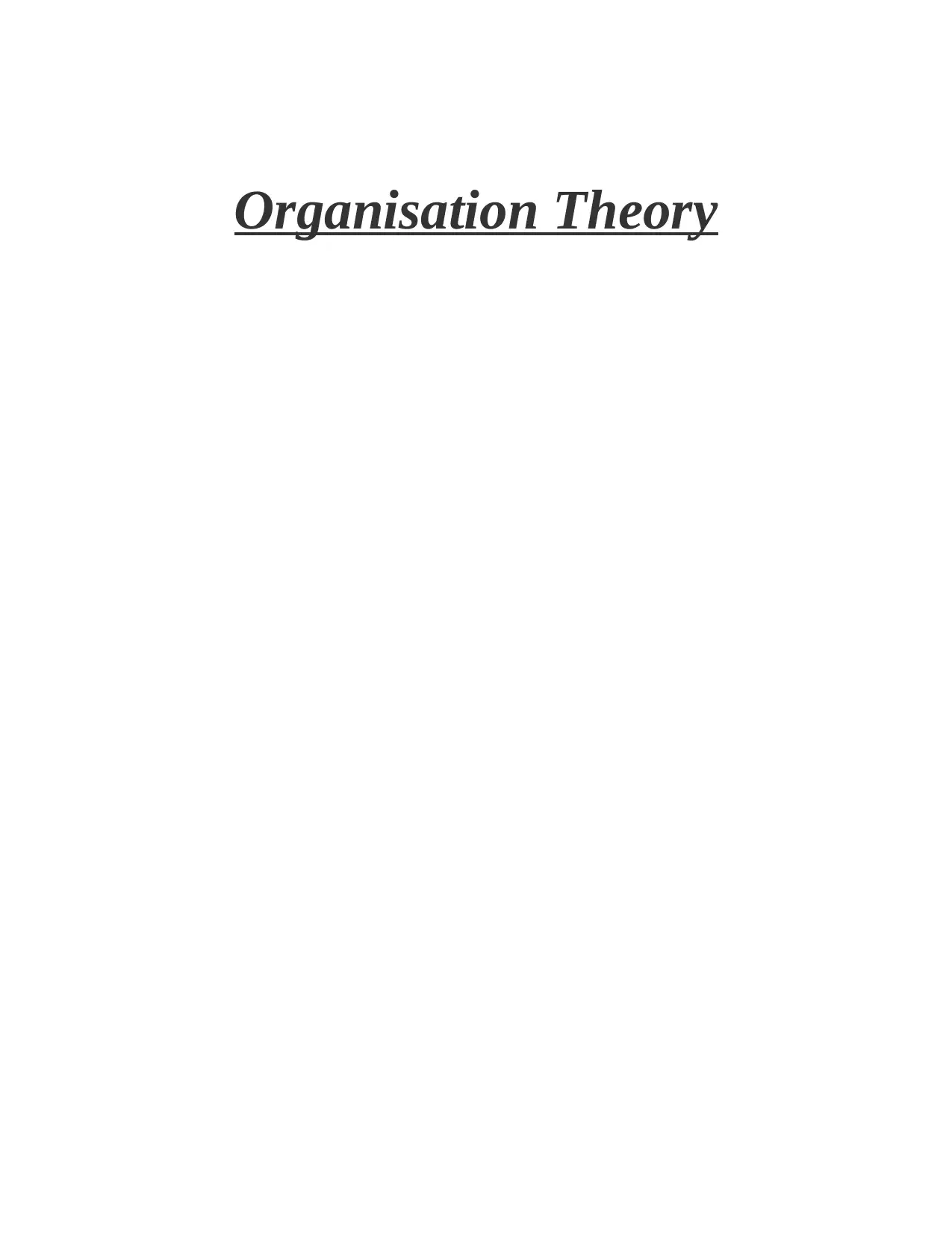
Organisation Theory
Secure Best Marks with AI Grader
Need help grading? Try our AI Grader for instant feedback on your assignments.
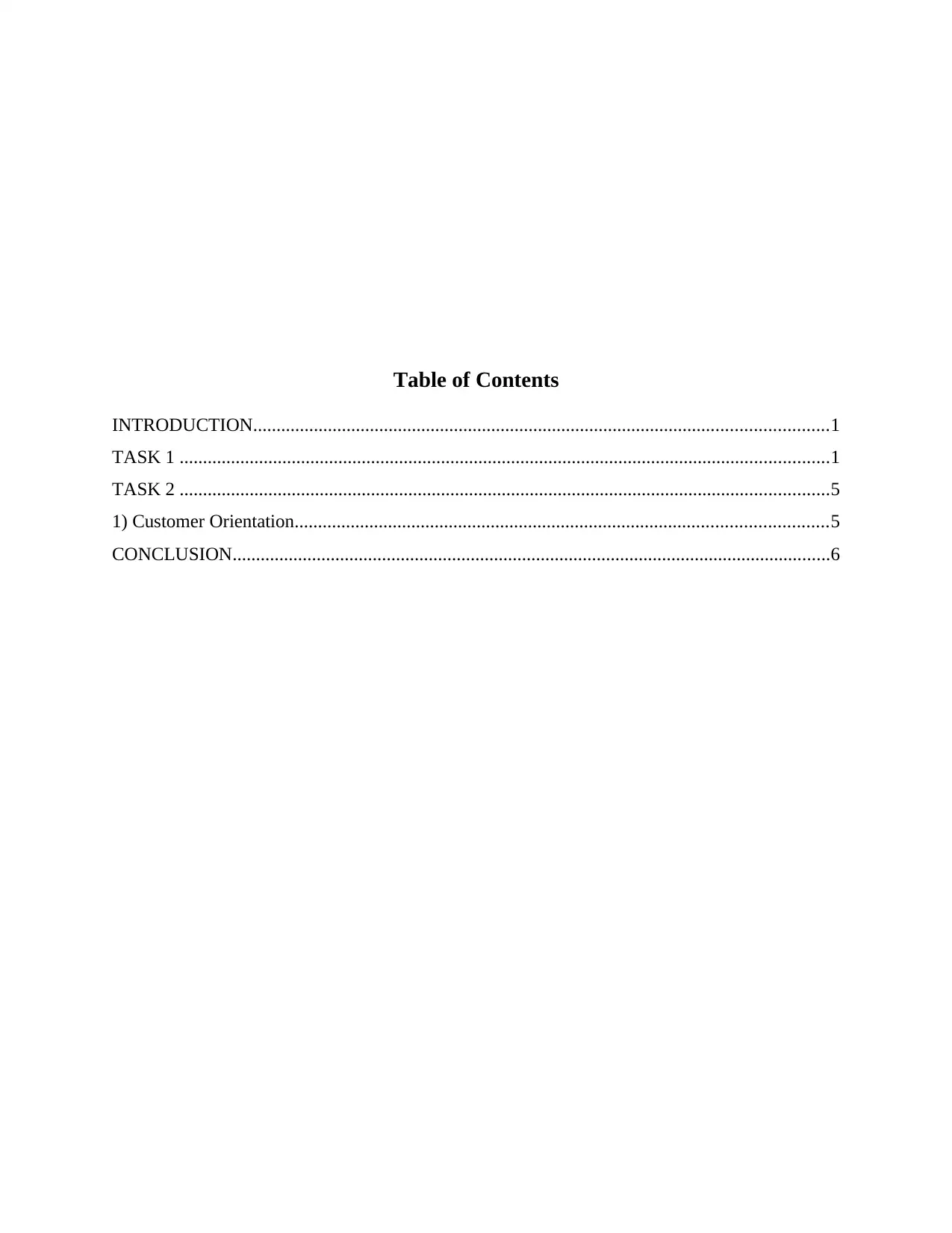
Table of Contents
INTRODUCTION...........................................................................................................................1
TASK 1 ...........................................................................................................................................1
TASK 2 ...........................................................................................................................................5
1) Customer Orientation..................................................................................................................5
CONCLUSION................................................................................................................................6
INTRODUCTION...........................................................................................................................1
TASK 1 ...........................................................................................................................................1
TASK 2 ...........................................................................................................................................5
1) Customer Orientation..................................................................................................................5
CONCLUSION................................................................................................................................6
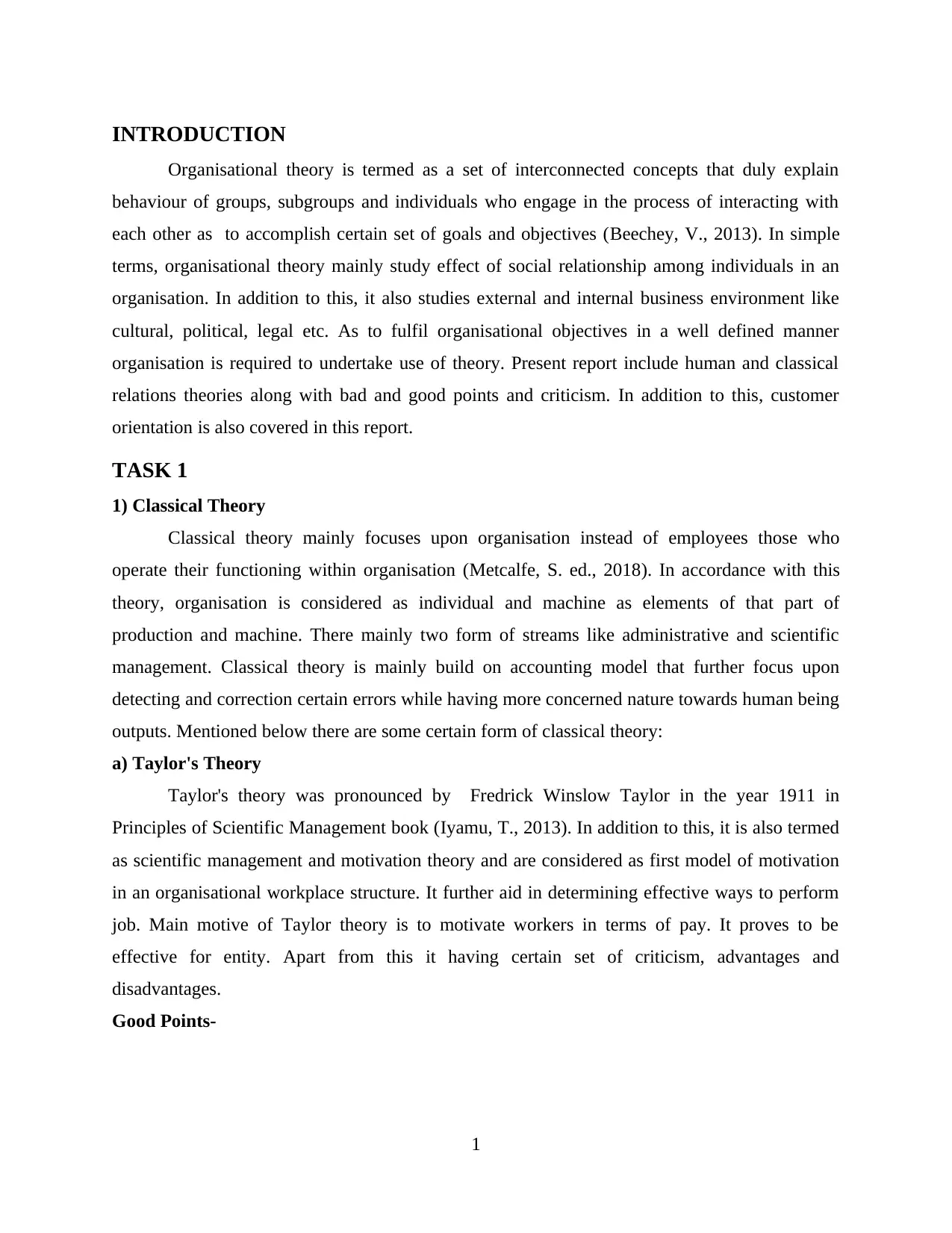
INTRODUCTION
Organisational theory is termed as a set of interconnected concepts that duly explain
behaviour of groups, subgroups and individuals who engage in the process of interacting with
each other as to accomplish certain set of goals and objectives (Beechey, V., 2013). In simple
terms, organisational theory mainly study effect of social relationship among individuals in an
organisation. In addition to this, it also studies external and internal business environment like
cultural, political, legal etc. As to fulfil organisational objectives in a well defined manner
organisation is required to undertake use of theory. Present report include human and classical
relations theories along with bad and good points and criticism. In addition to this, customer
orientation is also covered in this report.
TASK 1
1) Classical Theory
Classical theory mainly focuses upon organisation instead of employees those who
operate their functioning within organisation (Metcalfe, S. ed., 2018). In accordance with this
theory, organisation is considered as individual and machine as elements of that part of
production and machine. There mainly two form of streams like administrative and scientific
management. Classical theory is mainly build on accounting model that further focus upon
detecting and correction certain errors while having more concerned nature towards human being
outputs. Mentioned below there are some certain form of classical theory:
a) Taylor's Theory
Taylor's theory was pronounced by Fredrick Winslow Taylor in the year 1911 in
Principles of Scientific Management book (Iyamu, T., 2013). In addition to this, it is also termed
as scientific management and motivation theory and are considered as first model of motivation
in an organisational workplace structure. It further aid in determining effective ways to perform
job. Main motive of Taylor theory is to motivate workers in terms of pay. It proves to be
effective for entity. Apart from this it having certain set of criticism, advantages and
disadvantages.
Good Points-
1
Organisational theory is termed as a set of interconnected concepts that duly explain
behaviour of groups, subgroups and individuals who engage in the process of interacting with
each other as to accomplish certain set of goals and objectives (Beechey, V., 2013). In simple
terms, organisational theory mainly study effect of social relationship among individuals in an
organisation. In addition to this, it also studies external and internal business environment like
cultural, political, legal etc. As to fulfil organisational objectives in a well defined manner
organisation is required to undertake use of theory. Present report include human and classical
relations theories along with bad and good points and criticism. In addition to this, customer
orientation is also covered in this report.
TASK 1
1) Classical Theory
Classical theory mainly focuses upon organisation instead of employees those who
operate their functioning within organisation (Metcalfe, S. ed., 2018). In accordance with this
theory, organisation is considered as individual and machine as elements of that part of
production and machine. There mainly two form of streams like administrative and scientific
management. Classical theory is mainly build on accounting model that further focus upon
detecting and correction certain errors while having more concerned nature towards human being
outputs. Mentioned below there are some certain form of classical theory:
a) Taylor's Theory
Taylor's theory was pronounced by Fredrick Winslow Taylor in the year 1911 in
Principles of Scientific Management book (Iyamu, T., 2013). In addition to this, it is also termed
as scientific management and motivation theory and are considered as first model of motivation
in an organisational workplace structure. It further aid in determining effective ways to perform
job. Main motive of Taylor theory is to motivate workers in terms of pay. It proves to be
effective for entity. Apart from this it having certain set of criticism, advantages and
disadvantages.
Good Points-
1
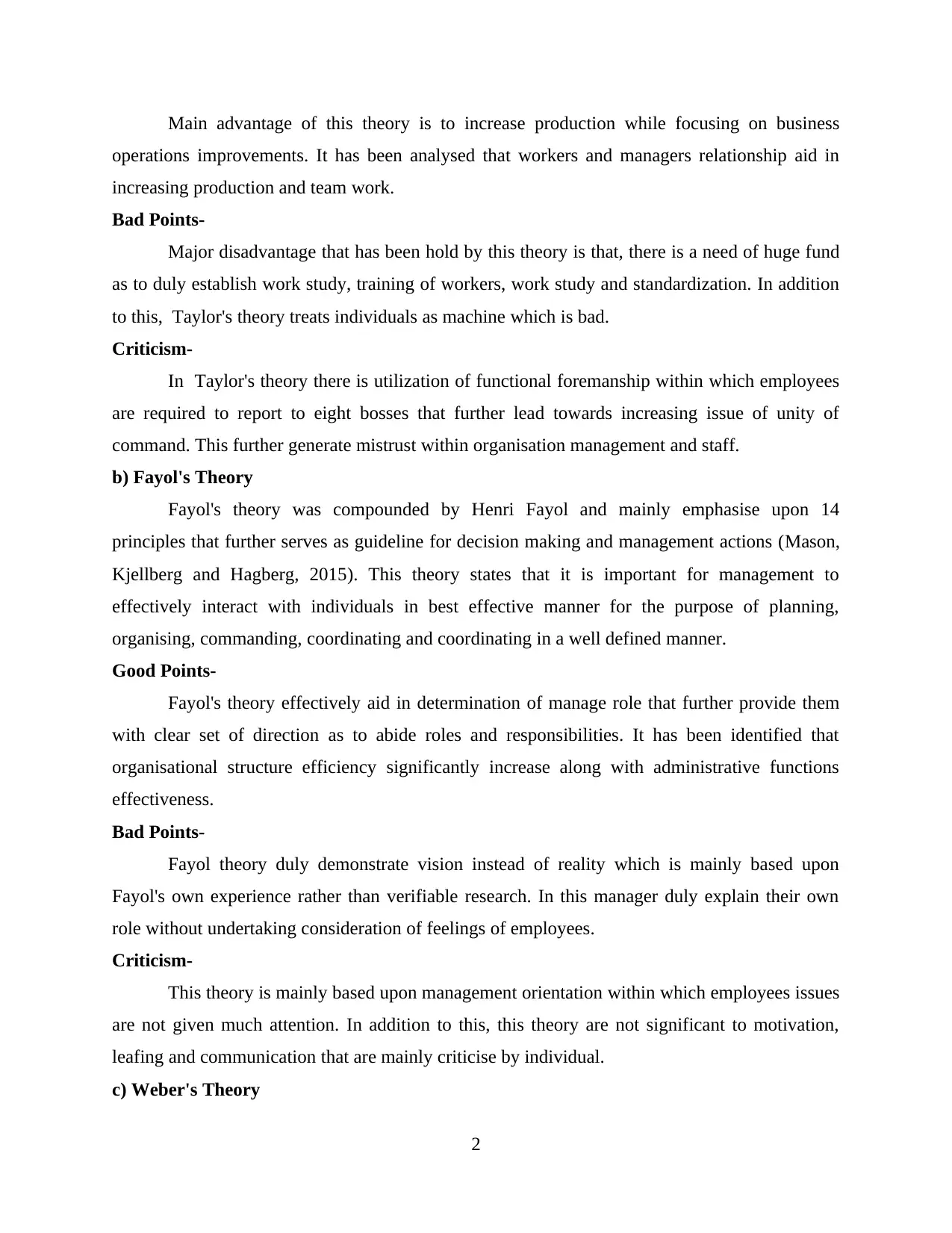
Main advantage of this theory is to increase production while focusing on business
operations improvements. It has been analysed that workers and managers relationship aid in
increasing production and team work.
Bad Points-
Major disadvantage that has been hold by this theory is that, there is a need of huge fund
as to duly establish work study, training of workers, work study and standardization. In addition
to this, Taylor's theory treats individuals as machine which is bad.
Criticism-
In Taylor's theory there is utilization of functional foremanship within which employees
are required to report to eight bosses that further lead towards increasing issue of unity of
command. This further generate mistrust within organisation management and staff.
b) Fayol's Theory
Fayol's theory was compounded by Henri Fayol and mainly emphasise upon 14
principles that further serves as guideline for decision making and management actions (Mason,
Kjellberg and Hagberg, 2015). This theory states that it is important for management to
effectively interact with individuals in best effective manner for the purpose of planning,
organising, commanding, coordinating and coordinating in a well defined manner.
Good Points-
Fayol's theory effectively aid in determination of manage role that further provide them
with clear set of direction as to abide roles and responsibilities. It has been identified that
organisational structure efficiency significantly increase along with administrative functions
effectiveness.
Bad Points-
Fayol theory duly demonstrate vision instead of reality which is mainly based upon
Fayol's own experience rather than verifiable research. In this manager duly explain their own
role without undertaking consideration of feelings of employees.
Criticism-
This theory is mainly based upon management orientation within which employees issues
are not given much attention. In addition to this, this theory are not significant to motivation,
leafing and communication that are mainly criticise by individual.
c) Weber's Theory
2
operations improvements. It has been analysed that workers and managers relationship aid in
increasing production and team work.
Bad Points-
Major disadvantage that has been hold by this theory is that, there is a need of huge fund
as to duly establish work study, training of workers, work study and standardization. In addition
to this, Taylor's theory treats individuals as machine which is bad.
Criticism-
In Taylor's theory there is utilization of functional foremanship within which employees
are required to report to eight bosses that further lead towards increasing issue of unity of
command. This further generate mistrust within organisation management and staff.
b) Fayol's Theory
Fayol's theory was compounded by Henri Fayol and mainly emphasise upon 14
principles that further serves as guideline for decision making and management actions (Mason,
Kjellberg and Hagberg, 2015). This theory states that it is important for management to
effectively interact with individuals in best effective manner for the purpose of planning,
organising, commanding, coordinating and coordinating in a well defined manner.
Good Points-
Fayol's theory effectively aid in determination of manage role that further provide them
with clear set of direction as to abide roles and responsibilities. It has been identified that
organisational structure efficiency significantly increase along with administrative functions
effectiveness.
Bad Points-
Fayol theory duly demonstrate vision instead of reality which is mainly based upon
Fayol's own experience rather than verifiable research. In this manager duly explain their own
role without undertaking consideration of feelings of employees.
Criticism-
This theory is mainly based upon management orientation within which employees issues
are not given much attention. In addition to this, this theory are not significant to motivation,
leafing and communication that are mainly criticise by individual.
c) Weber's Theory
2
Secure Best Marks with AI Grader
Need help grading? Try our AI Grader for instant feedback on your assignments.
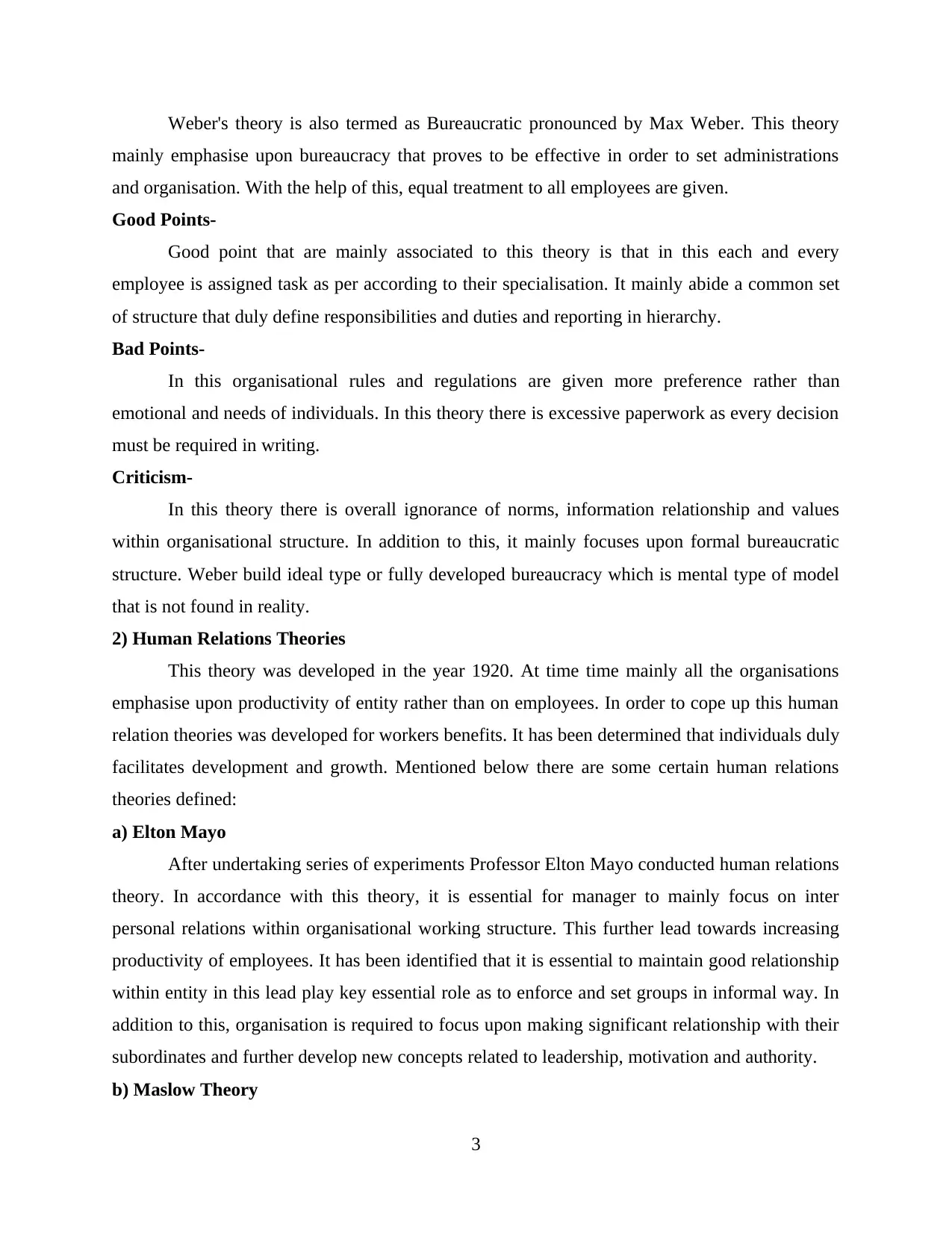
Weber's theory is also termed as Bureaucratic pronounced by Max Weber. This theory
mainly emphasise upon bureaucracy that proves to be effective in order to set administrations
and organisation. With the help of this, equal treatment to all employees are given.
Good Points-
Good point that are mainly associated to this theory is that in this each and every
employee is assigned task as per according to their specialisation. It mainly abide a common set
of structure that duly define responsibilities and duties and reporting in hierarchy.
Bad Points-
In this organisational rules and regulations are given more preference rather than
emotional and needs of individuals. In this theory there is excessive paperwork as every decision
must be required in writing.
Criticism-
In this theory there is overall ignorance of norms, information relationship and values
within organisational structure. In addition to this, it mainly focuses upon formal bureaucratic
structure. Weber build ideal type or fully developed bureaucracy which is mental type of model
that is not found in reality.
2) Human Relations Theories
This theory was developed in the year 1920. At time time mainly all the organisations
emphasise upon productivity of entity rather than on employees. In order to cope up this human
relation theories was developed for workers benefits. It has been determined that individuals duly
facilitates development and growth. Mentioned below there are some certain human relations
theories defined:
a) Elton Mayo
After undertaking series of experiments Professor Elton Mayo conducted human relations
theory. In accordance with this theory, it is essential for manager to mainly focus on inter
personal relations within organisational working structure. This further lead towards increasing
productivity of employees. It has been identified that it is essential to maintain good relationship
within entity in this lead play key essential role as to enforce and set groups in informal way. In
addition to this, organisation is required to focus upon making significant relationship with their
subordinates and further develop new concepts related to leadership, motivation and authority.
b) Maslow Theory
3
mainly emphasise upon bureaucracy that proves to be effective in order to set administrations
and organisation. With the help of this, equal treatment to all employees are given.
Good Points-
Good point that are mainly associated to this theory is that in this each and every
employee is assigned task as per according to their specialisation. It mainly abide a common set
of structure that duly define responsibilities and duties and reporting in hierarchy.
Bad Points-
In this organisational rules and regulations are given more preference rather than
emotional and needs of individuals. In this theory there is excessive paperwork as every decision
must be required in writing.
Criticism-
In this theory there is overall ignorance of norms, information relationship and values
within organisational structure. In addition to this, it mainly focuses upon formal bureaucratic
structure. Weber build ideal type or fully developed bureaucracy which is mental type of model
that is not found in reality.
2) Human Relations Theories
This theory was developed in the year 1920. At time time mainly all the organisations
emphasise upon productivity of entity rather than on employees. In order to cope up this human
relation theories was developed for workers benefits. It has been determined that individuals duly
facilitates development and growth. Mentioned below there are some certain human relations
theories defined:
a) Elton Mayo
After undertaking series of experiments Professor Elton Mayo conducted human relations
theory. In accordance with this theory, it is essential for manager to mainly focus on inter
personal relations within organisational working structure. This further lead towards increasing
productivity of employees. It has been identified that it is essential to maintain good relationship
within entity in this lead play key essential role as to enforce and set groups in informal way. In
addition to this, organisation is required to focus upon making significant relationship with their
subordinates and further develop new concepts related to leadership, motivation and authority.
b) Maslow Theory
3
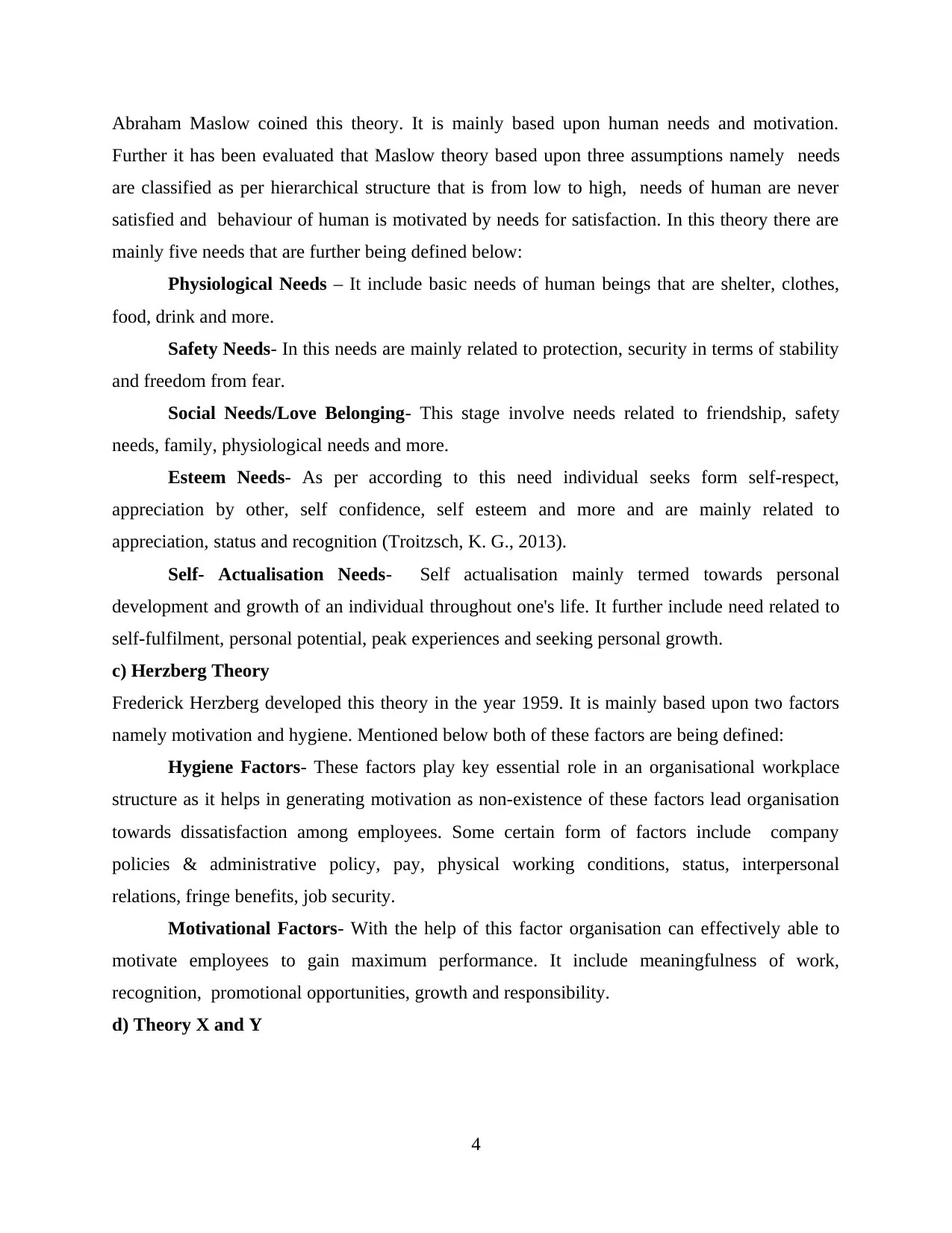
Abraham Maslow coined this theory. It is mainly based upon human needs and motivation.
Further it has been evaluated that Maslow theory based upon three assumptions namely needs
are classified as per hierarchical structure that is from low to high, needs of human are never
satisfied and behaviour of human is motivated by needs for satisfaction. In this theory there are
mainly five needs that are further being defined below:
Physiological Needs – It include basic needs of human beings that are shelter, clothes,
food, drink and more.
Safety Needs- In this needs are mainly related to protection, security in terms of stability
and freedom from fear.
Social Needs/Love Belonging- This stage involve needs related to friendship, safety
needs, family, physiological needs and more.
Esteem Needs- As per according to this need individual seeks form self-respect,
appreciation by other, self confidence, self esteem and more and are mainly related to
appreciation, status and recognition (Troitzsch, K. G., 2013).
Self- Actualisation Needs- Self actualisation mainly termed towards personal
development and growth of an individual throughout one's life. It further include need related to
self-fulfilment, personal potential, peak experiences and seeking personal growth.
c) Herzberg Theory
Frederick Herzberg developed this theory in the year 1959. It is mainly based upon two factors
namely motivation and hygiene. Mentioned below both of these factors are being defined:
Hygiene Factors- These factors play key essential role in an organisational workplace
structure as it helps in generating motivation as non-existence of these factors lead organisation
towards dissatisfaction among employees. Some certain form of factors include company
policies & administrative policy, pay, physical working conditions, status, interpersonal
relations, fringe benefits, job security.
Motivational Factors- With the help of this factor organisation can effectively able to
motivate employees to gain maximum performance. It include meaningfulness of work,
recognition, promotional opportunities, growth and responsibility.
d) Theory X and Y
4
Further it has been evaluated that Maslow theory based upon three assumptions namely needs
are classified as per hierarchical structure that is from low to high, needs of human are never
satisfied and behaviour of human is motivated by needs for satisfaction. In this theory there are
mainly five needs that are further being defined below:
Physiological Needs – It include basic needs of human beings that are shelter, clothes,
food, drink and more.
Safety Needs- In this needs are mainly related to protection, security in terms of stability
and freedom from fear.
Social Needs/Love Belonging- This stage involve needs related to friendship, safety
needs, family, physiological needs and more.
Esteem Needs- As per according to this need individual seeks form self-respect,
appreciation by other, self confidence, self esteem and more and are mainly related to
appreciation, status and recognition (Troitzsch, K. G., 2013).
Self- Actualisation Needs- Self actualisation mainly termed towards personal
development and growth of an individual throughout one's life. It further include need related to
self-fulfilment, personal potential, peak experiences and seeking personal growth.
c) Herzberg Theory
Frederick Herzberg developed this theory in the year 1959. It is mainly based upon two factors
namely motivation and hygiene. Mentioned below both of these factors are being defined:
Hygiene Factors- These factors play key essential role in an organisational workplace
structure as it helps in generating motivation as non-existence of these factors lead organisation
towards dissatisfaction among employees. Some certain form of factors include company
policies & administrative policy, pay, physical working conditions, status, interpersonal
relations, fringe benefits, job security.
Motivational Factors- With the help of this factor organisation can effectively able to
motivate employees to gain maximum performance. It include meaningfulness of work,
recognition, promotional opportunities, growth and responsibility.
d) Theory X and Y
4
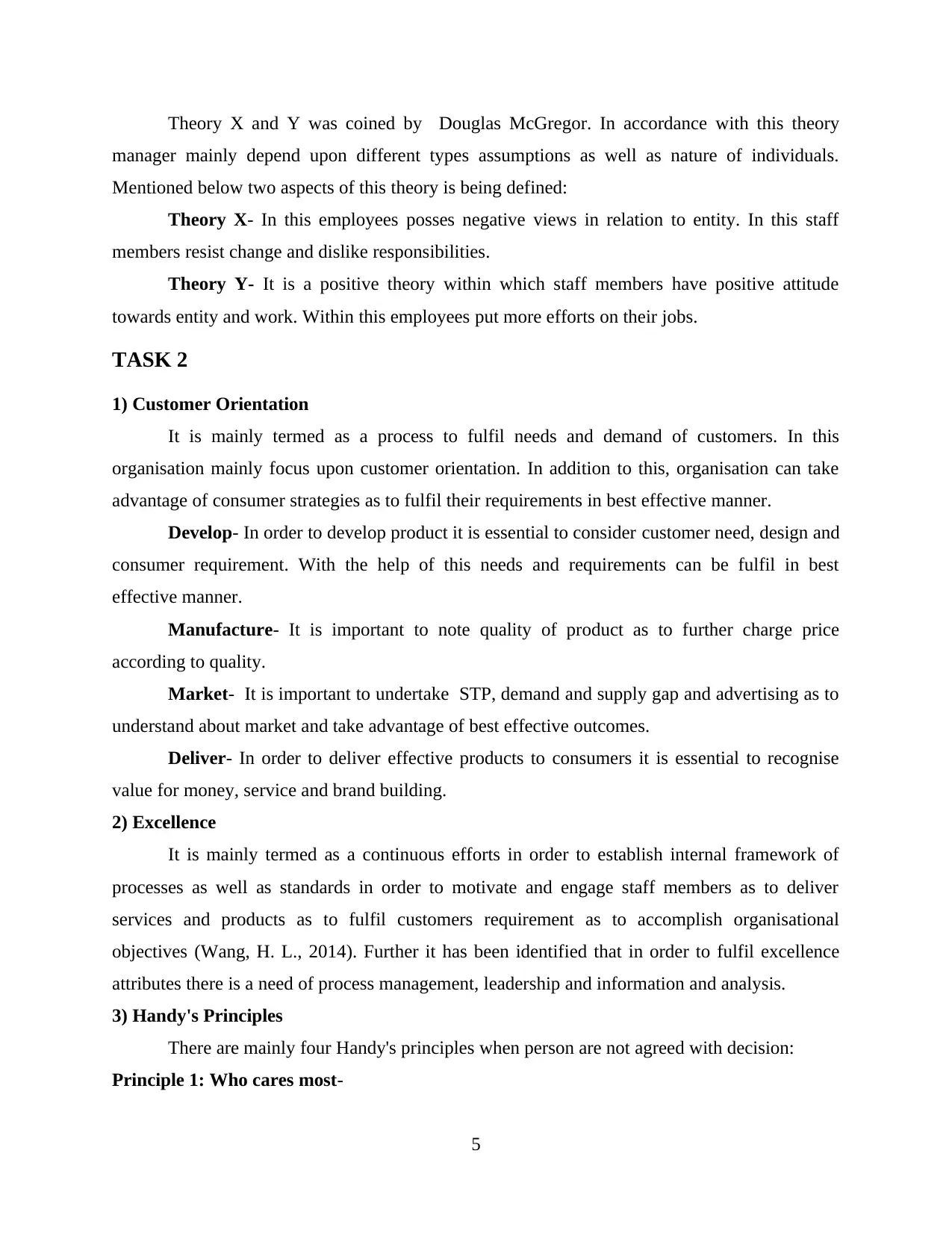
Theory X and Y was coined by Douglas McGregor. In accordance with this theory
manager mainly depend upon different types assumptions as well as nature of individuals.
Mentioned below two aspects of this theory is being defined:
Theory X- In this employees posses negative views in relation to entity. In this staff
members resist change and dislike responsibilities.
Theory Y- It is a positive theory within which staff members have positive attitude
towards entity and work. Within this employees put more efforts on their jobs.
TASK 2
1) Customer Orientation
It is mainly termed as a process to fulfil needs and demand of customers. In this
organisation mainly focus upon customer orientation. In addition to this, organisation can take
advantage of consumer strategies as to fulfil their requirements in best effective manner.
Develop- In order to develop product it is essential to consider customer need, design and
consumer requirement. With the help of this needs and requirements can be fulfil in best
effective manner.
Manufacture- It is important to note quality of product as to further charge price
according to quality.
Market- It is important to undertake STP, demand and supply gap and advertising as to
understand about market and take advantage of best effective outcomes.
Deliver- In order to deliver effective products to consumers it is essential to recognise
value for money, service and brand building.
2) Excellence
It is mainly termed as a continuous efforts in order to establish internal framework of
processes as well as standards in order to motivate and engage staff members as to deliver
services and products as to fulfil customers requirement as to accomplish organisational
objectives (Wang, H. L., 2014). Further it has been identified that in order to fulfil excellence
attributes there is a need of process management, leadership and information and analysis.
3) Handy's Principles
There are mainly four Handy's principles when person are not agreed with decision:
Principle 1: Who cares most-
5
manager mainly depend upon different types assumptions as well as nature of individuals.
Mentioned below two aspects of this theory is being defined:
Theory X- In this employees posses negative views in relation to entity. In this staff
members resist change and dislike responsibilities.
Theory Y- It is a positive theory within which staff members have positive attitude
towards entity and work. Within this employees put more efforts on their jobs.
TASK 2
1) Customer Orientation
It is mainly termed as a process to fulfil needs and demand of customers. In this
organisation mainly focus upon customer orientation. In addition to this, organisation can take
advantage of consumer strategies as to fulfil their requirements in best effective manner.
Develop- In order to develop product it is essential to consider customer need, design and
consumer requirement. With the help of this needs and requirements can be fulfil in best
effective manner.
Manufacture- It is important to note quality of product as to further charge price
according to quality.
Market- It is important to undertake STP, demand and supply gap and advertising as to
understand about market and take advantage of best effective outcomes.
Deliver- In order to deliver effective products to consumers it is essential to recognise
value for money, service and brand building.
2) Excellence
It is mainly termed as a continuous efforts in order to establish internal framework of
processes as well as standards in order to motivate and engage staff members as to deliver
services and products as to fulfil customers requirement as to accomplish organisational
objectives (Wang, H. L., 2014). Further it has been identified that in order to fulfil excellence
attributes there is a need of process management, leadership and information and analysis.
3) Handy's Principles
There are mainly four Handy's principles when person are not agreed with decision:
Principle 1: Who cares most-
5
Paraphrase This Document
Need a fresh take? Get an instant paraphrase of this document with our AI Paraphraser
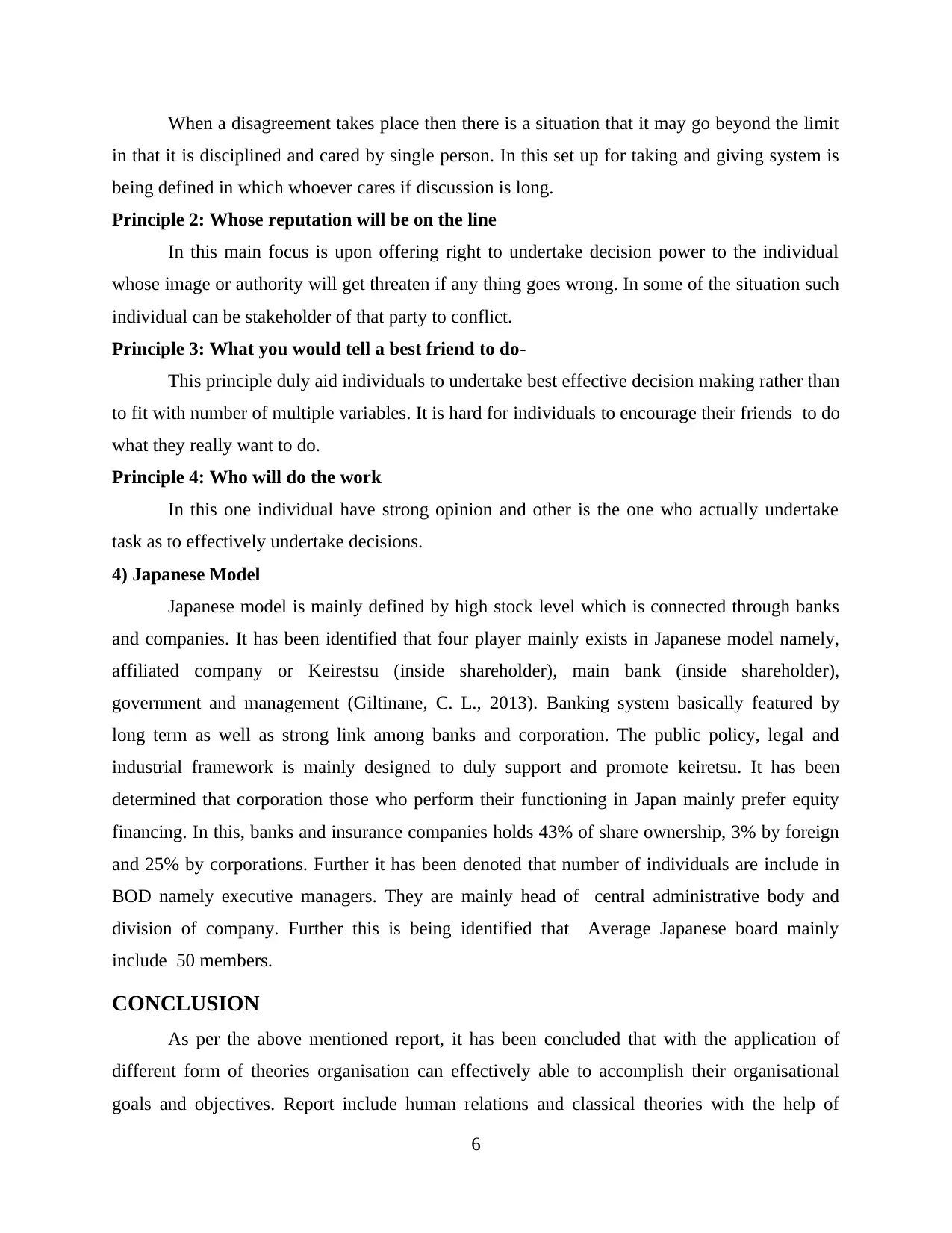
When a disagreement takes place then there is a situation that it may go beyond the limit
in that it is disciplined and cared by single person. In this set up for taking and giving system is
being defined in which whoever cares if discussion is long.
Principle 2: Whose reputation will be on the line
In this main focus is upon offering right to undertake decision power to the individual
whose image or authority will get threaten if any thing goes wrong. In some of the situation such
individual can be stakeholder of that party to conflict.
Principle 3: What you would tell a best friend to do-
This principle duly aid individuals to undertake best effective decision making rather than
to fit with number of multiple variables. It is hard for individuals to encourage their friends to do
what they really want to do.
Principle 4: Who will do the work
In this one individual have strong opinion and other is the one who actually undertake
task as to effectively undertake decisions.
4) Japanese Model
Japanese model is mainly defined by high stock level which is connected through banks
and companies. It has been identified that four player mainly exists in Japanese model namely,
affiliated company or Keirestsu (inside shareholder), main bank (inside shareholder),
government and management (Giltinane, C. L., 2013). Banking system basically featured by
long term as well as strong link among banks and corporation. The public policy, legal and
industrial framework is mainly designed to duly support and promote keiretsu. It has been
determined that corporation those who perform their functioning in Japan mainly prefer equity
financing. In this, banks and insurance companies holds 43% of share ownership, 3% by foreign
and 25% by corporations. Further it has been denoted that number of individuals are include in
BOD namely executive managers. They are mainly head of central administrative body and
division of company. Further this is being identified that Average Japanese board mainly
include 50 members.
CONCLUSION
As per the above mentioned report, it has been concluded that with the application of
different form of theories organisation can effectively able to accomplish their organisational
goals and objectives. Report include human relations and classical theories with the help of
6
in that it is disciplined and cared by single person. In this set up for taking and giving system is
being defined in which whoever cares if discussion is long.
Principle 2: Whose reputation will be on the line
In this main focus is upon offering right to undertake decision power to the individual
whose image or authority will get threaten if any thing goes wrong. In some of the situation such
individual can be stakeholder of that party to conflict.
Principle 3: What you would tell a best friend to do-
This principle duly aid individuals to undertake best effective decision making rather than
to fit with number of multiple variables. It is hard for individuals to encourage their friends to do
what they really want to do.
Principle 4: Who will do the work
In this one individual have strong opinion and other is the one who actually undertake
task as to effectively undertake decisions.
4) Japanese Model
Japanese model is mainly defined by high stock level which is connected through banks
and companies. It has been identified that four player mainly exists in Japanese model namely,
affiliated company or Keirestsu (inside shareholder), main bank (inside shareholder),
government and management (Giltinane, C. L., 2013). Banking system basically featured by
long term as well as strong link among banks and corporation. The public policy, legal and
industrial framework is mainly designed to duly support and promote keiretsu. It has been
determined that corporation those who perform their functioning in Japan mainly prefer equity
financing. In this, banks and insurance companies holds 43% of share ownership, 3% by foreign
and 25% by corporations. Further it has been denoted that number of individuals are include in
BOD namely executive managers. They are mainly head of central administrative body and
division of company. Further this is being identified that Average Japanese board mainly
include 50 members.
CONCLUSION
As per the above mentioned report, it has been concluded that with the application of
different form of theories organisation can effectively able to accomplish their organisational
goals and objectives. Report include human relations and classical theories with the help of
6
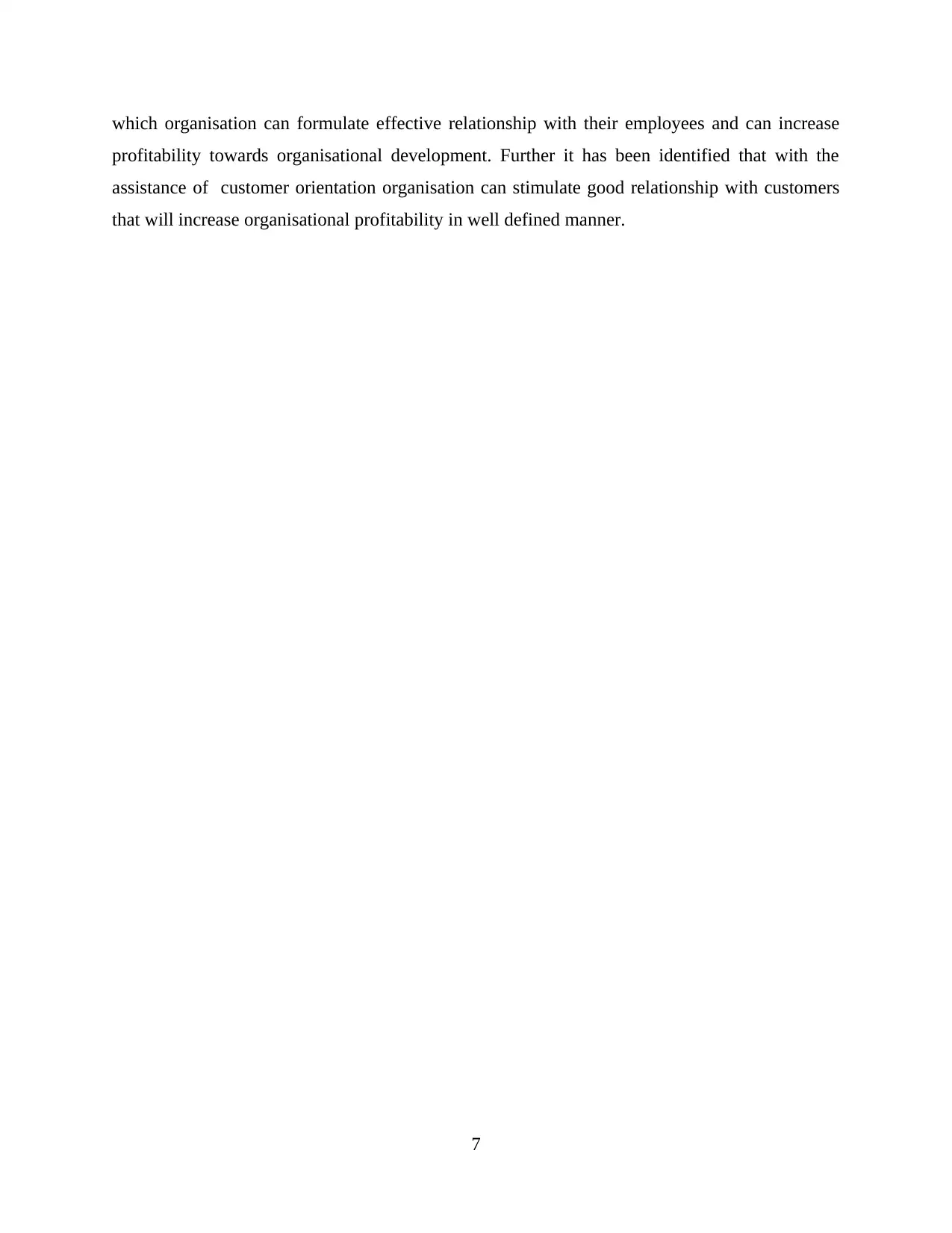
which organisation can formulate effective relationship with their employees and can increase
profitability towards organisational development. Further it has been identified that with the
assistance of customer orientation organisation can stimulate good relationship with customers
that will increase organisational profitability in well defined manner.
7
profitability towards organisational development. Further it has been identified that with the
assistance of customer orientation organisation can stimulate good relationship with customers
that will increase organisational profitability in well defined manner.
7

8
Secure Best Marks with AI Grader
Need help grading? Try our AI Grader for instant feedback on your assignments.
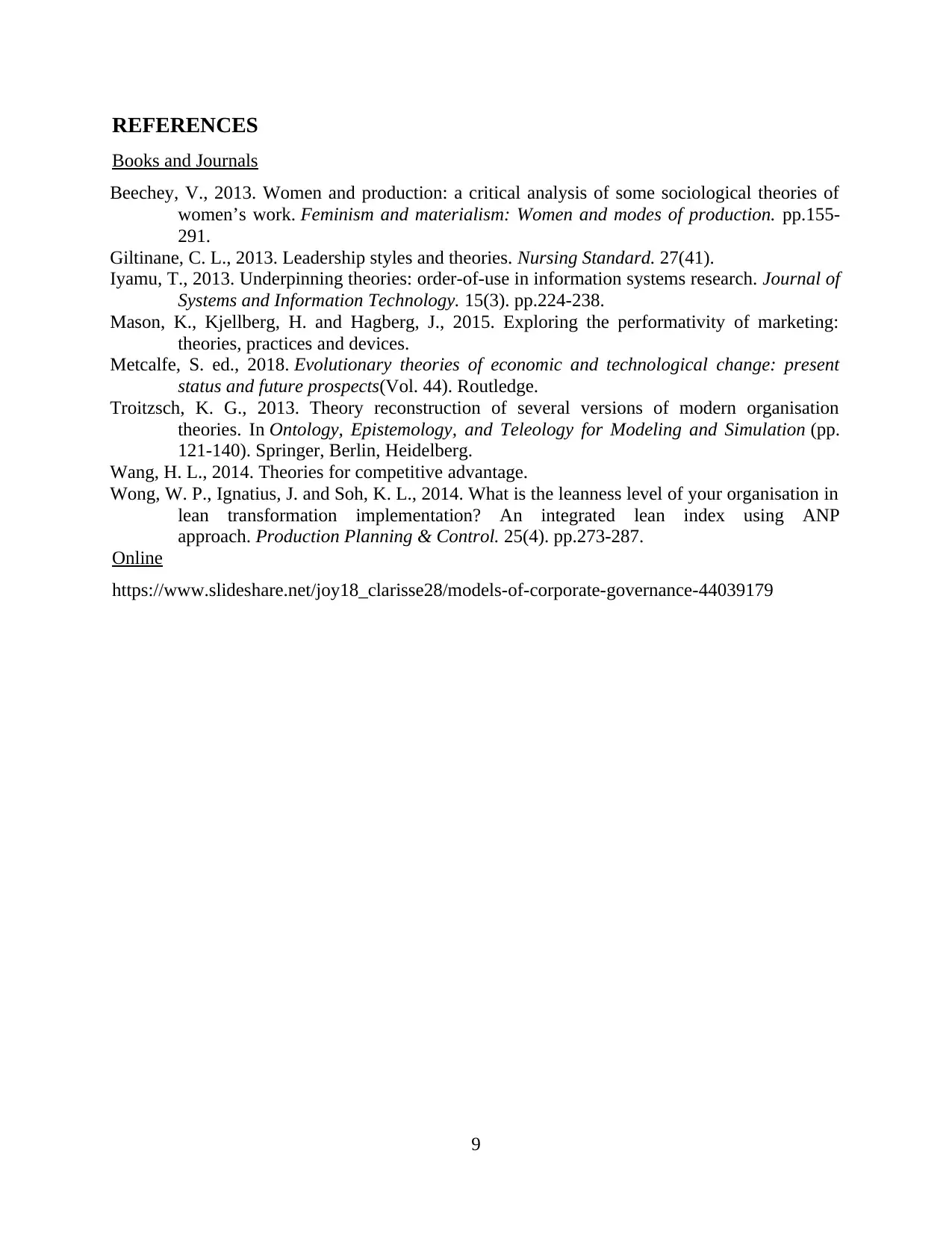
REFERENCES
Books and Journals
Beechey, V., 2013. Women and production: a critical analysis of some sociological theories of
women’s work. Feminism and materialism: Women and modes of production. pp.155-
291.
Giltinane, C. L., 2013. Leadership styles and theories. Nursing Standard. 27(41).
Iyamu, T., 2013. Underpinning theories: order-of-use in information systems research. Journal of
Systems and Information Technology. 15(3). pp.224-238.
Mason, K., Kjellberg, H. and Hagberg, J., 2015. Exploring the performativity of marketing:
theories, practices and devices.
Metcalfe, S. ed., 2018. Evolutionary theories of economic and technological change: present
status and future prospects(Vol. 44). Routledge.
Troitzsch, K. G., 2013. Theory reconstruction of several versions of modern organisation
theories. In Ontology, Epistemology, and Teleology for Modeling and Simulation (pp.
121-140). Springer, Berlin, Heidelberg.
Wang, H. L., 2014. Theories for competitive advantage.
Wong, W. P., Ignatius, J. and Soh, K. L., 2014. What is the leanness level of your organisation in
lean transformation implementation? An integrated lean index using ANP
approach. Production Planning & Control. 25(4). pp.273-287.
Online
https://www.slideshare.net/joy18_clarisse28/models-of-corporate-governance-44039179
9
Books and Journals
Beechey, V., 2013. Women and production: a critical analysis of some sociological theories of
women’s work. Feminism and materialism: Women and modes of production. pp.155-
291.
Giltinane, C. L., 2013. Leadership styles and theories. Nursing Standard. 27(41).
Iyamu, T., 2013. Underpinning theories: order-of-use in information systems research. Journal of
Systems and Information Technology. 15(3). pp.224-238.
Mason, K., Kjellberg, H. and Hagberg, J., 2015. Exploring the performativity of marketing:
theories, practices and devices.
Metcalfe, S. ed., 2018. Evolutionary theories of economic and technological change: present
status and future prospects(Vol. 44). Routledge.
Troitzsch, K. G., 2013. Theory reconstruction of several versions of modern organisation
theories. In Ontology, Epistemology, and Teleology for Modeling and Simulation (pp.
121-140). Springer, Berlin, Heidelberg.
Wang, H. L., 2014. Theories for competitive advantage.
Wong, W. P., Ignatius, J. and Soh, K. L., 2014. What is the leanness level of your organisation in
lean transformation implementation? An integrated lean index using ANP
approach. Production Planning & Control. 25(4). pp.273-287.
Online
https://www.slideshare.net/joy18_clarisse28/models-of-corporate-governance-44039179
9
1 out of 11
Related Documents
Your All-in-One AI-Powered Toolkit for Academic Success.
+13062052269
info@desklib.com
Available 24*7 on WhatsApp / Email
![[object Object]](/_next/static/media/star-bottom.7253800d.svg)
Unlock your academic potential
© 2024 | Zucol Services PVT LTD | All rights reserved.





